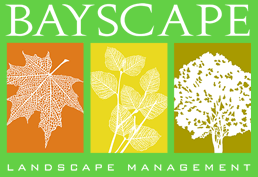How to Choose the Right Location to Plant A Tree
Trees that are carefully chosen add beauty to a home’s landscape and also provide a return on investment to your residential property. Trees planted around homes can also provide shade, privacy, windbreaks, and an opportunity to create ecosystems for birds and other beneficial creatures and insects. While the distance between the home and where to plant a tree will vary on tree species and the function you intend for the tree, there are careful considerations you must take int0 account as a homeowner, that you may have not thought of otherwise…
Where to Plant a Shade Tree
Shade trees are planted where they will provide protection from the afternoon sun during summer (usually near the southwest corner of the property). Consider if you want shade protection over a patio or a certain corner of the home. Conversely, will the shade tree block sunlight from a large section of grass or garden bed? Consider the size when planting shade or other trees, because they vary in height and spread.
- Large trees, up to 70′ or more should be planted a minimum of 20 feet from the home
- Medium-sized trees, up to 70′ tall, 15′ from the home
- Small trees, 30’tall or less, 8 to 10′ from the home
The Do’s for Planting a Tree Near the Home
Choose trees that are to scale with the house and the yard. Medium and small trees are well-suited for small homes. Small trees will also make a tall or large houses seem even larger. Large trees work wonders for two-story or tall homes, but they make a small house appear even smaller. Choosing trees that are adapted (native) to the area will reduce the chances of insect infestations and tree disease. If you choose a tree that is prone to insects, take precautionary pest control measures for the home. Learn about treating tree disease or insect and tree prevention on our blog.
The Don’ts for Planting a Tree Near the Home
Don’t choose trees that create a lot of litter, such as trees that drop messy fruit or frequently shed seed pods. For example, unless you have a sprawling property or plan on committing lots of time to jarring homemade olive oil – olive trees can be a major headache. olive tree needs quite a bit of maintenance and will drop messy olives (read The Hard Facts About Growing and Spraying Olive Trees). If you have the space on a large property, check out our Fruit Tree Selection guide for our California climate.
Do not plant trees close to the home that can pose a hazard, such as trees that are susceptible to breaking in windy conditions, fall within the “ignition zone” for fires, or damage power lines. **Performing any work near power lines can be dangerous. Qualified and certified arborists (like ours) have special training and use insulated tools to avoid mistakes and damage when pruning. Without the proper training and tools, a person can be injured or even killed.**
Did you Consider the Tree Root System?
When deciding on a location to plant a tree, it’s vital to remember that roots spread underground. Roots will grow in the direction of where moisture and oxygen is available. Many times, the roots will grow beyond the spread of the tree’s crown (The tree crown is the top part of the tree, which features branches that grow out from the main trunk and support the various leaves used for photosynthesis). Trees with large or aggressive root systems, when planted to close, can cause structural damage to the foundation of your home, garage, underground pipes, and even sidewalks and pavers. It is imperative to consider the potential spread of the roots when deciding how far from the house, and other structures, to plant a tree.
Remember the Roof!
Limbs that overhang onto roofs can drop leaves, palms, or pine needles that need to be regularly removed, or else will they will clog gutters and even damage the roofing material over time. Clogged gutters is one of the most common and expensive homeowners make. If you aren’t going to regular clean your gutters, avoid planting trees that will drop leaves over your roof. Additionally, overhanging limbs allow for rodents such as rats, squirrels, or raccoons, easy access to the roof and possibly enter into the attic.
Ready to pick your location to plant a tree! Please remember, safety first! Please contact one of our arborists if you have concerns on choosing the best, and safest location to plant a tree.

